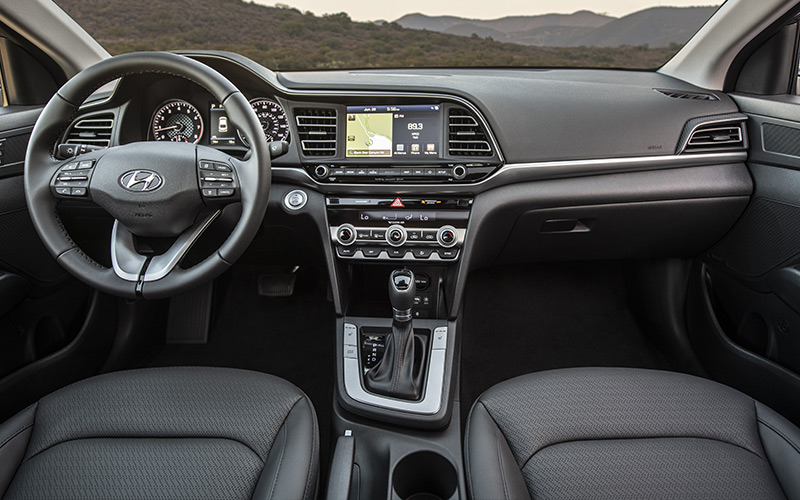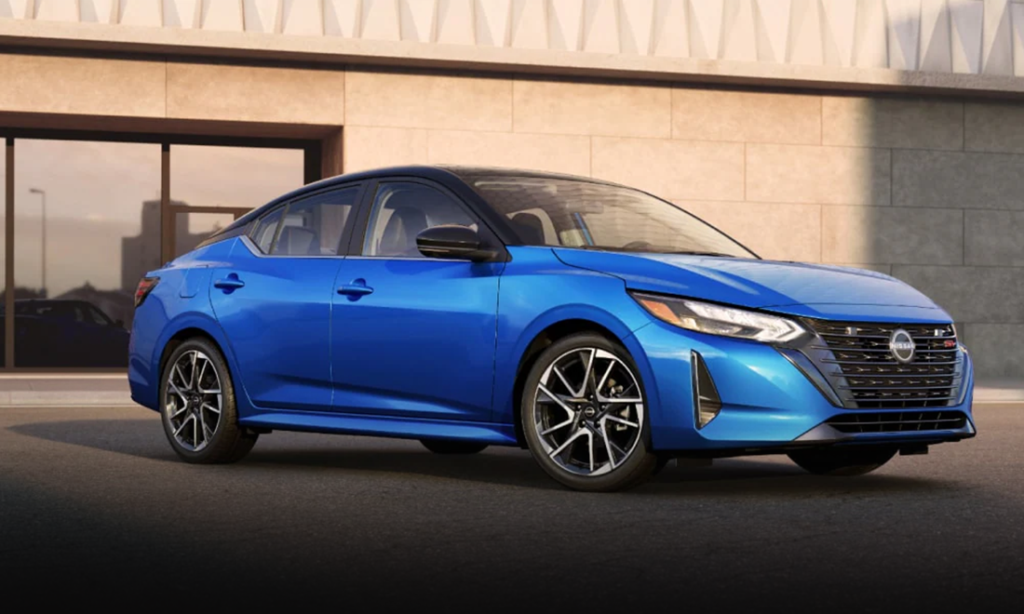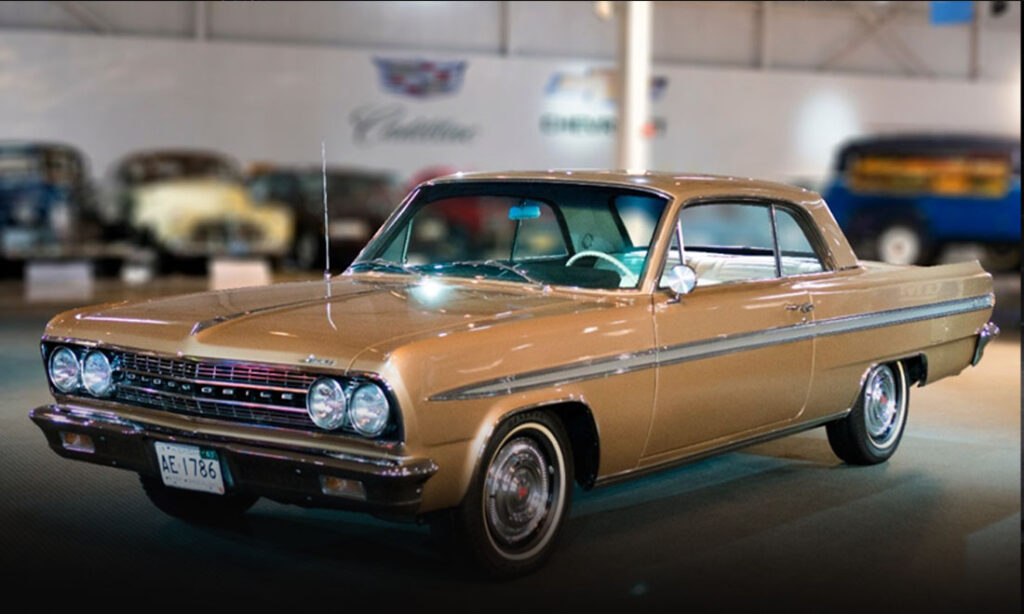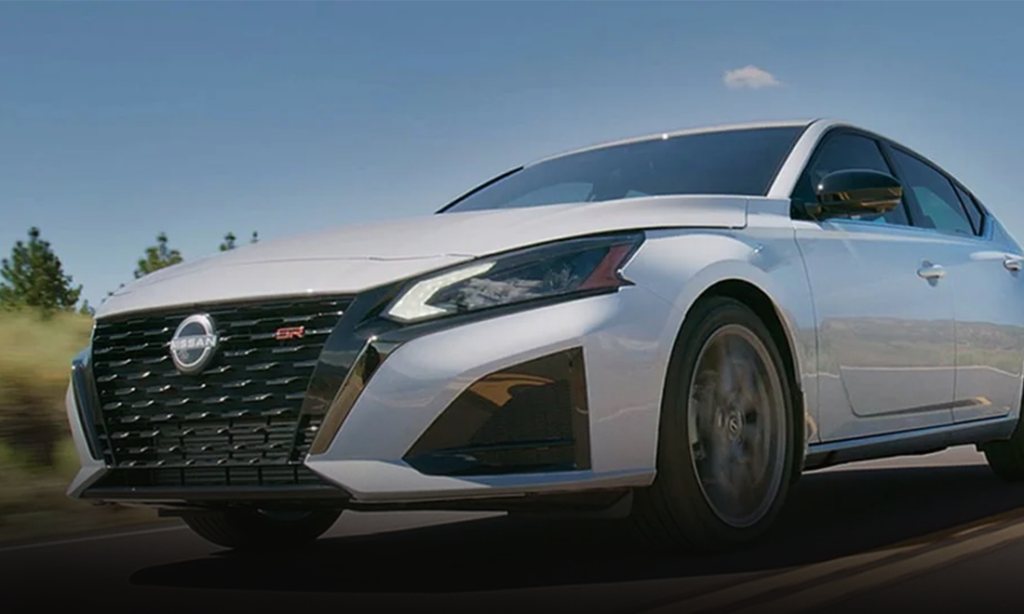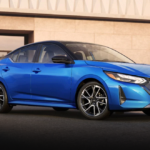2019 Hyundai Elantra Review
While other companies rest on their laurels Hyundai is taking their lunch money with upgrades to the already great Elantra for 2019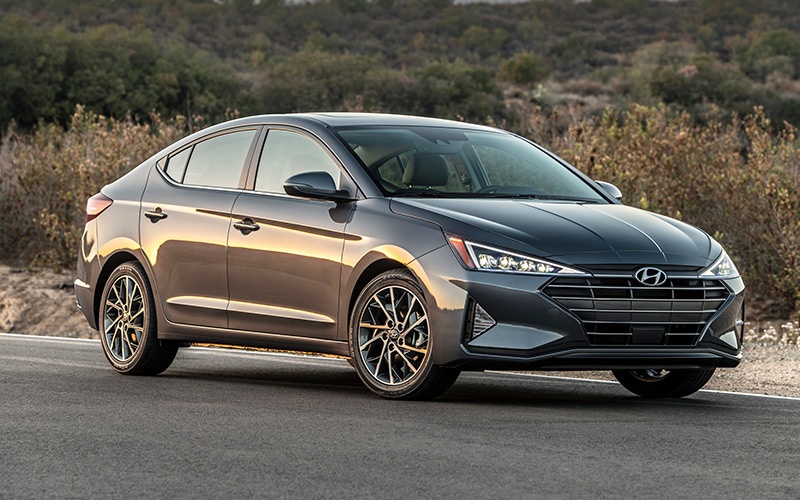
2019 Hyundai Elantra – hyundainews.com | Shop 2019 Hyundai Elantra on Carsforsale.com
What’s New for the 2019 Hyundai Elantra
The previous generation of the Elantra served as a touchstone for the brand as it changed from a bare-bones econobox producer to that of a brand capable of building truly intriguing and good-quality cars. For 2019 the Hyundai Elantra continues its recent ascent into the upper echelons of the compact sedan market. A small helping of new features gets added to what was already a very option in the segment. While many of its main rivals have been hoping for Hyundai to make a misstep the Korean automaker just continues to improve its products. Let’s take a deep look at the 2019 Elantra and what makes it special.
As it nears the end of its generation, the Elantra gets some pretty large changes both inside and out for 2019. Outside, it’s easily distinguishable compared to its 2018 version thanks to sleeker headlights and taillights, a sharper front fascia, and new fenders, hood, and rear trunk lid. Inside the changes continue with a brand new instrument panel, more storage, and even updates to the infotainment and HVAC controls. Also, the rear camera now has integrated guidelines.
The Breakdown
This is a lot of car for the money
Incredible warranty coverage
Great safety tech
A bit underpowered
Body roll is significant in corners
Not as pretty as its previous generation
Can’t wait for the Elantra N-Line
2019 Elantra Specs
- 147 horsepower from base engine
- 132 lb-ft of torque from base engine
- 5 available trims
- 14.4 cu-ft. of cargo capacity
- Fantastic infotainment system
- Standard active safety features on all but SE trim
- Warranty coverage is industry-leading
2019 Hyundai Elantra Powertrain
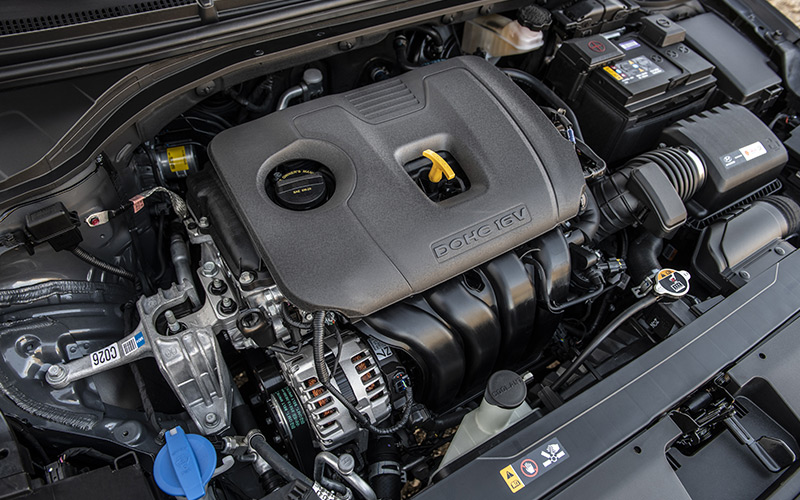
Hyundai has done something really clever with the Elantra engine lineup. There’s something for everyone. For those concerned the most about price, the standard 2.0-liter engine will do the job. The only downside is a lack of power. From that base engine, buyers will get 147 horsepower and 132 lb-ft of torque.
That’s not much and it’s easy to feel the anxiety building as one tries to enter a busy highway as the Elantra takes nine seconds of 100% throttle to reach 60mph. For those that cherish fuel economy over everything else, the Eco trim gets a 1.4-liter turbocharged engine that has a bit less power but more torque which allows it to be more efficient without being noticeably slower than the base powertrain. Then there’s the Elantra Sport with a 1.6-liter turbocharged engine that makes 201 horsepower and 195 lb-ft of torque.
That’s enough to make this small car feel properly quick and cuts more than 2 seconds off of the 0-60 time. Base models with the 2.0-liter come standard with a six-speed manual but a six-speed automatic is available. The Sport is also available with that same six-speed manual but those that opt for the automatic will get the same seven-speed dual-clutch transmission that’s in all Eco models. If you’re in the market for the Sport trim, drive both because they’re both too good for us to tell you what you’ll like more.
2019 Hyundai Elantra Fuel Economy & MPG
The Elantra is a strong competitor when it comes to fuel economy with government ratings of up to 35 MPG. What’s great about that is that it comes from the 1.4-liter turbocharged four-cylinder which we found to be fun and efficient. Still, the 2.0-liter gets respectable numbers at up to 33 MPG. The only way most drivers will get less than 30 is in cars equipped with a manual transmission and a 1.6-liter turbocharged engine.
Interior, Comfort, & Cargo Space
The Elantra offers a perfectly lovely place to be for most drives. Around harder turns, it’s prone to some body roll that’s rarely seen in rivals but the Sport trim solves the problem handily. Still, we doubt most drivers will drive hard enough to be annoyed. All but the most imperfect of roads will be easily and quietly managed by the Elantra and it goes to show how far this brand has come. Road noise is fairly low and none of the available engines are unpleasant.
Entry and exit are easy and there are more than enough adjustments in the front seats for most drivers to get comfortable. Rear seating is a bit more confined than we’d prefer but the benefit is a large trunk area that offers outstanding utility. For those rarely transporting adults in the rear seats, Hyundai has built quite a capable sedan for very little money.
Entertainment & Technology

It’s rare that an infotainment system is this good. Of course, we can’t say that about the base 5-inch screen but beyond it, the 7-inch unit or the optional 8-inch touchscreens are simply outstanding. They’re fast, easy to use, and highly intuitive. Apple CarPlay and Android Auto both work flawlessly too. Optional features like wireless device charging are well thought out and satisfying too.
Navigation is good and clear and we really like the bevy of USB ports littered through the cabin. If there’s anything we didn’t like it would have to be the premium Infinity audio system that just wasn’t nearly as crisp as rivals.
Safety Features
With a four-star crash test rating from the NHTSA, there are certainly better scoring vehicles on the market in the segment. Still, thanks to a number of standard safety features like lane-keeping assist, blind-spot monitoring, and automatic emergency braking on everything but the base SE trim level, we think the Elantra is a good choice when it comes to safety.
2019 Hyundai Elantra Trims & Pricing
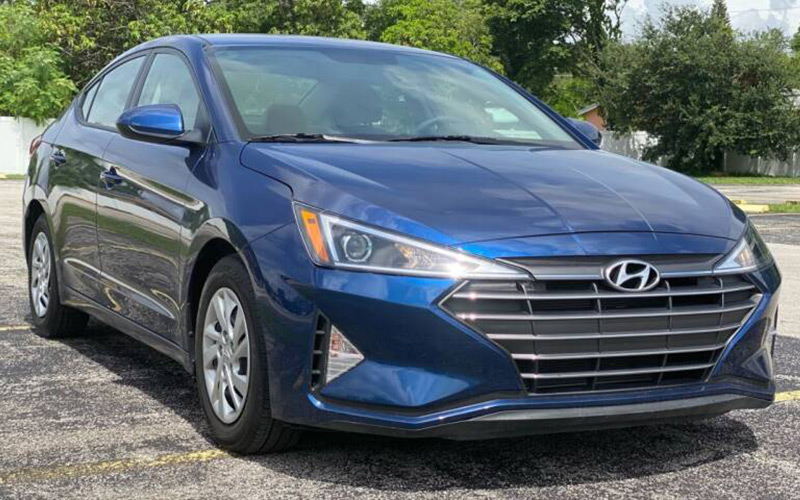
SE – $18,130
The Elantra SE is the only one available with a manual transmission which in fact, comes standard. For those that opt for the automatic gearbox, they’ll also get cruise control. The base model also comes with a 5-inch infotainment system equipped with Bluetooth, six speakers, a rearview camera with guidelines, power mirrors, and height-adjustable front seats.
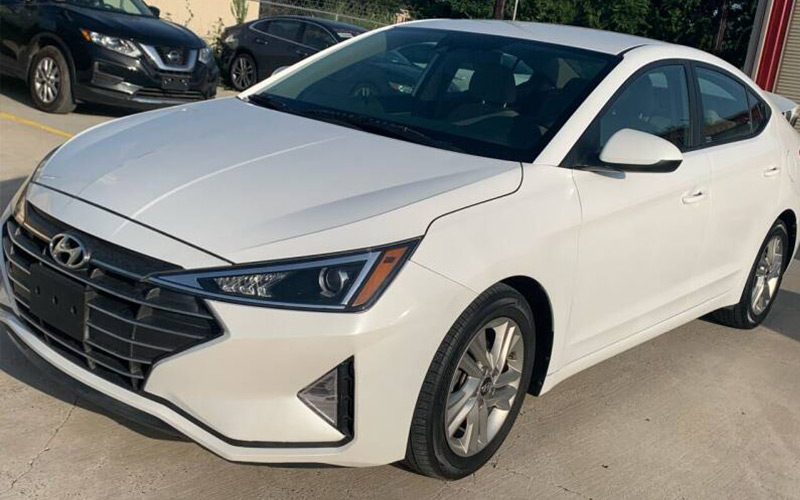
SEL – $20,430
The SEL swaps the 5-inch infotainment screen for a 7-inch touchscreen unit that has Android Auto and Apple CarPlay as well as satellite radio. It also swaps out the drum brakes on the rear wheels of the SE for discs. Wrapping those brakes are 16-inch alloy wheels. Finally, multiple safety technologies appear at this trim level including heated side mirrors, rear cross-traffic alert, automatic emergency braking, automatic headlights, lane departure warning, lane-keeping assist, and more.

ECO – $21,835
Buyers of the Eco trim get a 1.4-liter turbocharged engine designed specifically for this trim. It gets up to 35mpg. In terms of features, the Eco gets 15-inch alloy wheels, LED DRLs, dual-zone automatic climate control, keyless entry, push-button start, heated seats, sun visor extensions, and rear-seat cupholders.
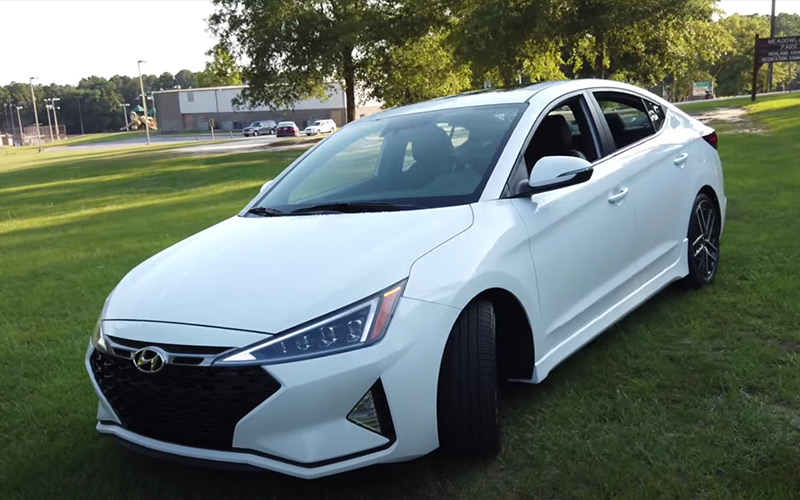
SPORT – $23,530
Opt for the Sport trim and you’ll get a special 1.6-liter turbocharged engine that makes a shade over 200 horsepower. There’s also a revised suspension for better handling near the limit. Add to that stronger brakes, a sunroof, a flat-bottomed steering wheel, leather sport seats that are heated, and 18-inch wheels with stickier rubber and it’s easy to see that this isn’t a Sport edition in name alone.
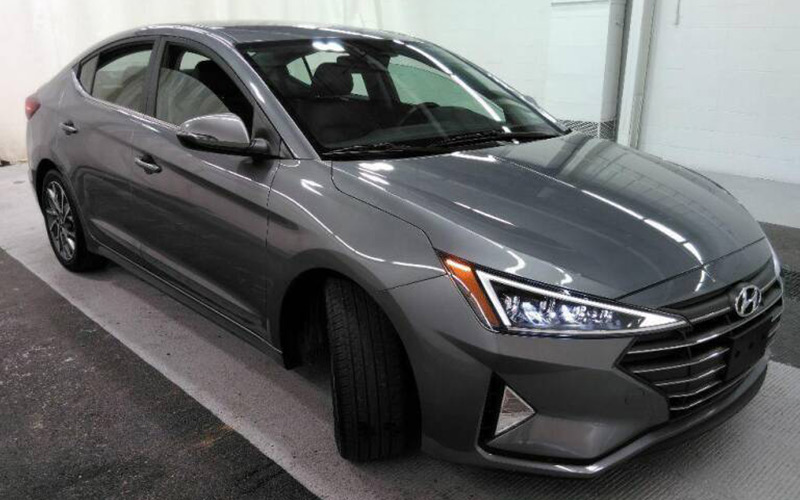
LIMITED – $23,630
The Limited is in our minds a bit of a letdown but for some it’s perfect. That’s because it adds a lot to love like a power-adjustable driver’s seat, 17-inch wheels, an eight-speaker Infinity premium audio system, automatic high beams, and LED headlights, but it only comes with the lackluster 2.0-liter engine and cannot be upgraded. The good news is that by configuring it this way, Hyundai keeps the overall cost low.
Warranties
While Hyundai follows the lead of companies like Honda who doesn’t offer any complimentary maintenance, they blow away almost any other company including Honda with an industry-leading limited warranty of 5 years or 60,000 miles and a powertrain warranty of 10-years or 100,000 miles.
What we think
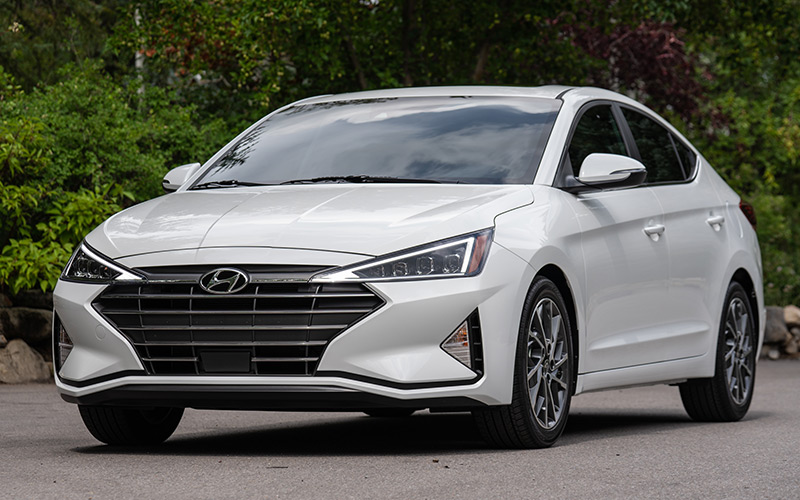
2019 Hyundai Elantra – hyundainews.com | Shop 2019 Hyundai Elantra on Carsforsale.com
For those in the market for this type of car, it’s hard to argue that the Elantra should be at or near the top of the list. Whether its economy, fuel efficiency, or sporting ability, there’s an Elantra that can do it and none of them will cost more than $25,000 fully equipped. Add to that excellent safety equipment and a warranty that can’t be matched and you get one incredible value.


